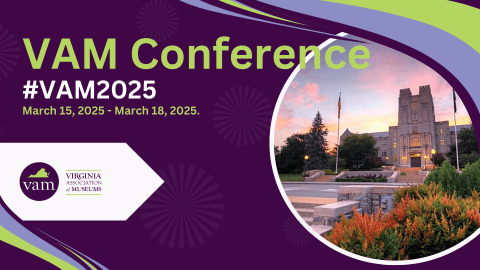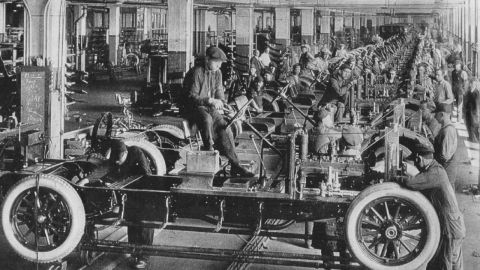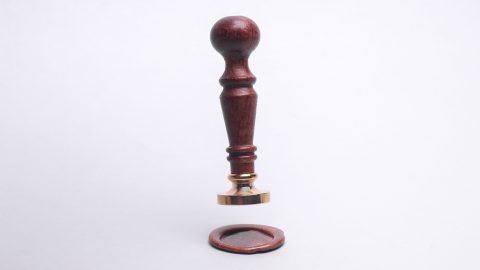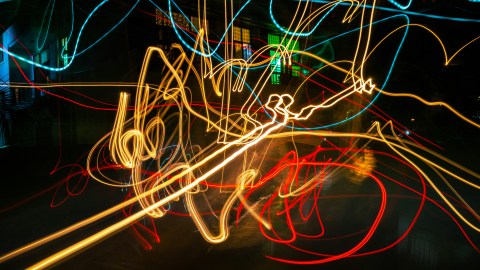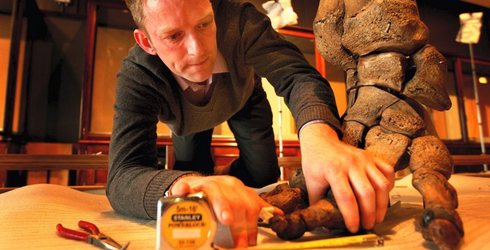
Today, guest blogger Henry McGhie (seen below), Head of Collections and Curator of Zoology at the Manchester Museum, shares his thoughts on how museums can empower visitors to become superheroes, and describes the museum’s unorthodox approach to the recent reinstallation of its natural history galleries.
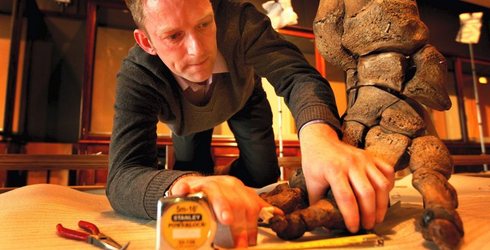 |
| photo credit: CityLife |
Preserved dead animals have real and undeniable power to change the way people think about themselves, about nature and about their relationships as part of nature. To me, the real power of natural history collections in museums lies in the ways that they connect people to the world beyond the museum through objects and experiences.
We worked through a number of these ideas when we were redeveloping the Manchester Museum’s main natural history gallery, which opened in April 2011 as Living Worlds. We were interested in doing something that addressed current environmental concerns and topics, but quickly realised that the last thing we wanted to do was to repeat negative news stories that people are all too familiar with from mass media. A new ice age (remember that one?), ozone depletion, forest destruction, climate change—the environment can too easily become little more than a series of issues, rather than the system we are in. In what was a major shift for us, we began to see the museum visit as a means to an end—what people did after than their visit—rather than focusing solely on what people did during the visit.
We wanted to appeal to people emotionally and individually and we definitely wanted to avoid our project becoming preachy (who needs that?). We selected a design firm, Brussels-based villa eugénie, who had no experience of working in museums but who had exactly what we were looking for: the ability to produce events and installations that grabbed people emotionally. As museum curators we could easily come up with stories about objects, but building drama and emotion don’t come so easily to us.
From our early meetings, villa eugénie were most captivated by the Victorian gallery environment, which has a protected building status, and by the positive message we were trying to convey. They developed an approach that combined tradition, modernity, visitor experience and innovative use of technology. One of their main comments to us was that the previous gallery was far too text heavy. This approach to text would not work in a gallery that was geared around building drama and emotion. So, we developed a smartphone app that visitor services assistants would use to engage with visitors. The main ‘headline’ messages that we wanted to emphasise appear in the gallery itself. Additional information, suggestions of activities to do and in ways to get involved in nature is found on the app. Most of the information on the app is housed on our collections management system (KE EMu), which we can very easily change, so we have found a really nifty way to avoid labels becoming out of date and to meet the challenge of providing cutting edge information.
 |
| Photo Credit: Ant Clausen for the Manchester Museum. |
Working with villa eugénie provided us with access to new ideas and approaches. I doubt if we would have got such a beautiful and thought provoking installation from anyone else. A mounted Crane and a piece of rubble from Hiroshima are surrounded by a thousand origami Cranes, international symbol of piece; a mounted wild Sheep (wearing a blue woolly jumper) and other animals that feature in our everyday lives are presented in a display case that has been turned into the inside of an apartment; animals being affected by climate change appear against a large coloured map of world temperature with facts about climate change appearing on LED displays.
Intellectually, we based our redisplay on Stephen Kellert’s typology of attitudes to nature. This was an excellent framework for us as it helped us think about how might we communicate with people who think differently from ourselves as museum curators, and how mixed groups might use the gallery as a platform for dialogue. By taking this approach I hope we enable more people to find a ‘way in’ to the gallery and to the topic of environmental sustainability. We hope that the gallery, which is very beautiful, will act as a spark or a catalyst, leading people to get more involved in activities after their visit, and challenging them to think about their own views on nature.
Our gallery has been the basis of a wide range of newly developed sessions for schools about nature and sustainability, the location for public events including panel discussions on climate change with university academics, and the springboard for a number of other events and activities, from a museum allotment to an exhibition of photographs of people who had themselves tattooed with illustrations of endangered wildlife to become ambassadors for those species.
This leads me to reflect on an essay Elizabeth Merritt recently posted to this blog: ‘Are Natural History Museums ready to become superheroes?’ I love the idea of natural history museums as superheroes but here’s where I disagree: buildings aren’t heroes—people are. And in order for there to be heroes there have to be villains. The challenge with environmental sustainability, as I see it, is to support people to make positive choices. We are all potentially heroes, just as we can all be villains. The power is in the trying and through the accumulation of tiny choices.
So if I was to run with the superhero theme, I think I’d go for something a bit different. Thinking about Superman as an example, rather than trying to cast natural history museums as Superman himself, I’d opt for them to be his ice fortress as it appeared in the movies, complete with crystals containing memories, fantastic things that help him reflect on his past and support him in his missions, and devices and objects relating to the past and the future. Sound familiar? Rather than trying to be the hero, I think museums should focus on how they can become super-efficient catalysts, benefitting people’s individual well-being, society and the natural environment.

